Graham Reid | | 3 min read
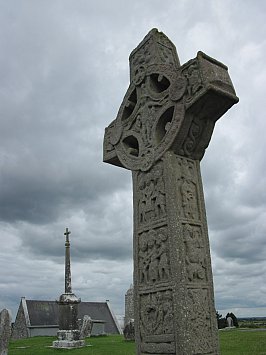
As
an example of Kiwi understatement it was masterful. As he emerging
from the 5000 year old tomb, blinking into the bright Irish sunlight,
the strapping lad from Taranaki was asked what he thought of it.
“Yeah,
pretty good, eh?” he said, then strode off purposefully, leaving
behind him one of the most ancient and breathtaking sights -- and
sites -- in Ireland.
Little
more than an hour from 21st century Dublin is this doorway
into a world which, until recent times, had lain undisturbed since it
was built by Neolithic farmers who hauled massive stones many
kilometres to arrange them systematically in this picturesque place.
Even
now, when you stand in the small room at the centre of this long and
low passage-tomb where people from this fertile region in a gentle
curve of the River Boyne laid out their dead, the stone roof is
exactly as it was when the slabs, some weighing many tonnes, were put
in place.
This
is Newgrange, part burial chamber and part massive sundial which only
allows a shaft of light into the central chamber at the time of the
winter solstice.
The
tiny roof box which lets in that rare shaft was only discovered
during excavations in the 60s, and everywhere are mysterious carvings
in stone -- carefully rendered spirals, the wavy ones perhaps
representing the nearby river -- and the silence of the ages.
Newgrange
-- one of the most celebrated pre-historic sites in Europe -- dates
back to a time before Man used metal tools, but knew the passage of
the stars and could measure the turning of seasons with astonishing
accuracy.
Impossibly
old though it may be, in the landscape Newgrange looks like a massive
piece of installation art: a low and circular ridge of green grass
some 80m across beneath which are walls of tightly packed stone. It
lies low on the land, just 13m high, and from a distance looks like
yet another rolling hill in the landscape -- although current
thinking is the top may have originally been flat.
The
tiny entrance is exceptionally beautiful, although controversial
because it was constructed in the 60s and therefore may not be a
replica of the original. But inside there is no denying the power of
this place which was here before the pyramids were built in Egypt.
Around
it are standing stones (dolmen), and legend says Newgrange was the
burial place of the High Kings of Tara, but archaeology confirms this
place existed some 3000 years before the Tara Kingdom.
This
wider region known as Bru Na Boinne (The Palace of the Boyne) has 40
passage-tombs, among them nearby Knowth which feels even more ancient
by being less open to the public. The tunnel to the centre remains
dark and impenetrable, but there is an undeniable beauty in the
weather-worn carvings on the huge stone slabs.
Ireland
is many things to many people: to economists it is the limping Celtic
Tiger; to writers, a land of literature; for those who like a tipple
it is where pubs appear to outnumber churches. For those in search of
history it offers a breadth disproportionate to its size: everywhere
are stately homes and castles, beautiful walled gardens, and ancient
megaliths in odd places, such as the Proleek Dolmen (with a capstone
weighing 46 tonnes) in County Louth near Dundalk. It is behind the
Ballymacscanlan House Hotel and by a golf course.
At
the picturesque and abandoned Clonmacnoise monastery beside the River
Shannon at the very navel of Ireland, crumbled ruins of tiny
worshipping places and stone churches stand amidst angled Celtic
crosses on ancient graves. Here you can walk on the same worn stones
as pilgrims did 1500 years ago and admire the artistry of those
unknown souls who carved Biblical scenes into massive crosses.
The
visitor centres at Clonmacnoise and Bru Na Boinne have excellent
displays, reconstructions, information and visual presentations which
offer flashes of insight into this world of so long ago.
But
always there remains the sense of mystery, as if a veil of the
unknowable was once quietly drawn over these places to ensure their
secrets could never to be fully understood.
FOR
INFORMATION ON THESE SITES
Bru
Na Boinne, Newgrange and Knowth Visitors Centre go here.
For
general information on Ireland’s historic sites see here.
For other travel stories by Graham Reid, see here for his two award-winning travel books.


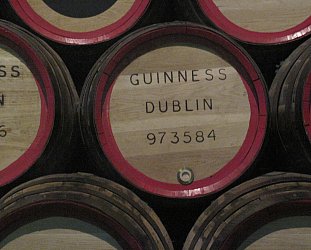

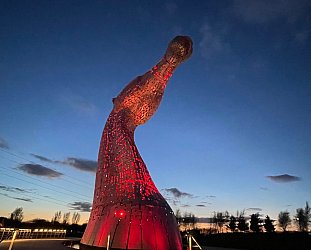
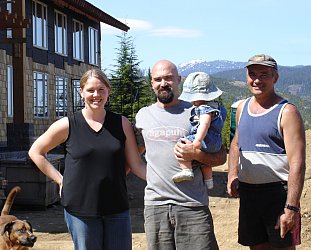
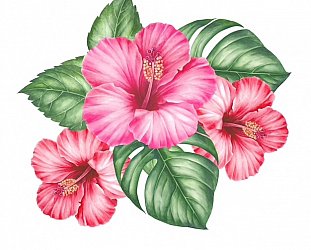
post a comment